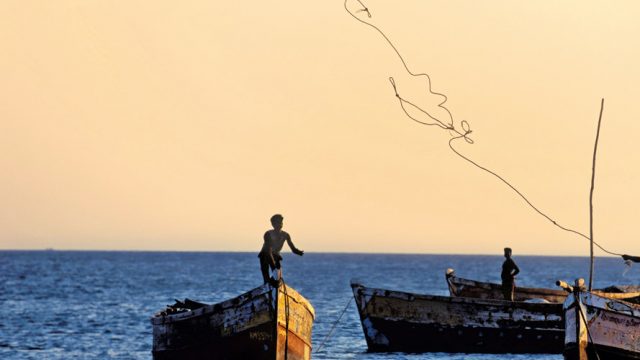On the southern coast of Tamil Nadu is a thin sliver of land, which protrudes into the sea like a needle pointing towards Sri Lanka. This is Dhanushkodi, accessible from the mainland through the island of Pamban, better known as Rameswaram. Famous for its temple, Rameswaram is also frequented by the curious who travel here to see the ghost town of Dhanushkodi.
Just 10-odd-km long, Dhanushkodi has an importance in Indian mythology that is far greater than the land mass it occupies. It is here that Rama is said to have built his bridge to cross into Lanka. Dhanushkodi, from its tip, lies less than 30km from Sri Lanka. Satellite images and geographical studies show that from that tip there exist a number of sandbanks, reefs and shoals that trace a fairly continuous line all the way to the Sri Lankan island of Mannar. This geographical feature is referred to as Adam’s Bridge (most of India would call it Rama’s Bridge). Some historical accounts state that, till the 15th century, this ‘bridge’ was almost completely above water and could be crossed by foot, until sections of it were washed away by a cyclone in 1480.

We set out from Rameswaram to explore the famous tip of Dhanushkodi. The narrow road is lined by a thin strip of sand and then the sea. In parts there are low bushes and thorny shrubs, followed by the endless sea in myriad shades of blue. After driving for about 20km, the road ends and regular vehicles can go no further. From this point you transfer to a 4×4 minibus, as the journey is now over a series of sandbanks. And this is where it gets quite surreal.
We pile into the minibus, packed to capacity with a mix of pilgrims, day trippers, screeching children and the odd curious person like us. The bus is a modified Mahindra vehicle that has seen better times. It smells of kerosene fumes, and features metal benches and windows simply stuck into place. We sit next to the driver, and perched on a box over the gearshift is a man who barks the usual questions to us in a mix of Tamil and broken English. Where you from? What you do? Why only two of you? No children? Our conversation thankfully ends swiftly due to our limited shared vocabulary, and we stare out of the window.
We meander along a narrow strip of beach, rocking violently from side to side, as waves lap at the wheels. Small birds splash around in the shallows, as eagles glide above, occasionally diving towards the white foam as they spot a catch. Every so often the driver veers sharply into the water which elicits whoops of excitement from the children and shrieks from the women. At various points in the journey the water is halfway up the wheel and splashes into the cabin from the holes in the rusted floor.
While there may have been a good reason for the driver to steer off into the water, it is not evident to us, and we surmise that this is a way for him to alleviate his boredom, and also perhaps provide the passengers with some excitement. The sky turns grey, the wind picks up and the clouds start pelting us with rain. There is pandemonium as people attempt to shut their windows and children start yelling. We encounter a couple of bikers stuck in the sand. Our driver grins malevolently and curses at them in Tamil with a “you-should-have-taken-my-rust-trap-you-morons” expression.

The bikers glare back but cannot do much else as their macho Enfields rev, sputter and die, filling the air with fumes and sand.
After 45 minutes, we reach the ghost town of Dhanushkodi. Half a century ago a cyclone swept this tiny hamlet,
killing most of its occupants and submerging large parts of the village. It has been uninhabited since. We walk among the ruins, clutching our jackets around us to protect against the rain. A few odd structures remain—a large stone gate, the façade of a church, railroad tracks, courtyards and walls of broken homes. But we see beauty in devastation. Dhanushkodi was once a bustling village, and the rail tracks from Rameswaram extended all the way here. Work is underway to restore parts of the old tracks, and build a better road to Dhanushkodi (it has since been completed). Vendors desultorily sell tea, biscuits, seashells and trinkets.
The dark grey skies and slow drizzle add to the melancholy as one reflects on the unpredictable fury of nature. What must it have been like to live here, so far from anything else, so close to land’s edge, at the mercy of the ocean? What would have possessed the inhabitants of Dhanushkodi to persist, on this thin sliver of land, with what would surely have been an omnipresent threat of annihilation hanging over their heads? We left with all sorts of thoughts swirling in our heads, and hopped back into the van for another bumpy ride back to the cold comfort of civilisation.




